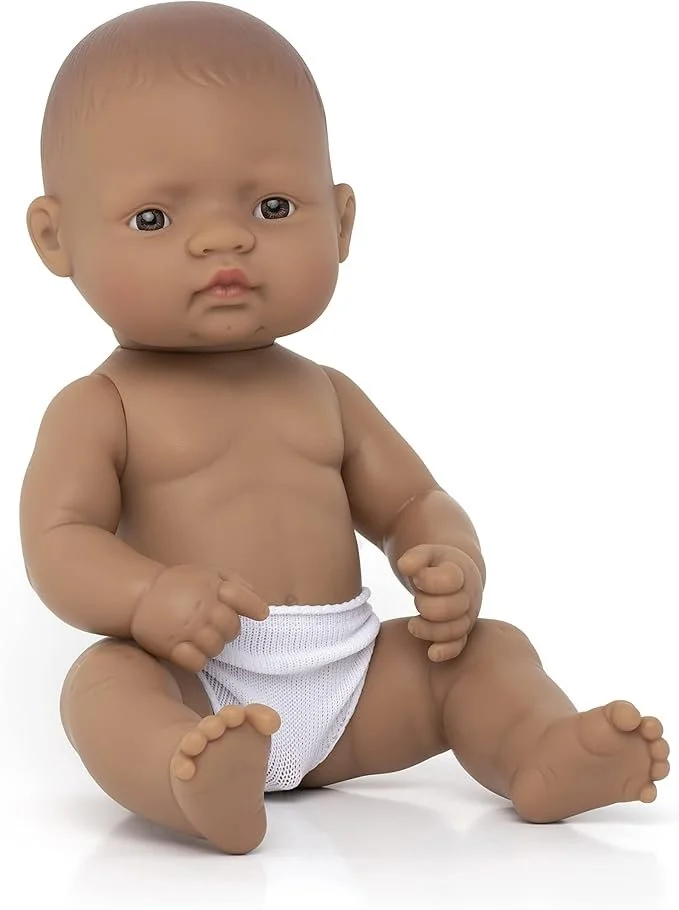Dolls for Every Developmental Stage
At the Dollhouse Project we believe that every kid deserves a doll that reflects and supports who they are at every age and stage. Dolls are more than toys—they’re tools for connection, cognitive development, and imaginative play. So whether you’re shopping for your baby’s first soft friend or your budding storyteller’s next adventure companion, this guide will help you find a doll that grows with your child.
Infancy (0–12 Months): Soothing and Sensory
During the first year, dolls serve one essential purpose—comfort. Look for ultra-soft dolls that encourage sensory exploration and bonding. These dolls are often a baby’s first “friend” and a comforting presence during naps, tummy time, or rides in the stroller. Look for minimal decorations to prevent choking hazards, and make sure to watch the infant closely when they have a doll nearby.
Our Picks
Toddlerhood (1–3 Years): Emotions and Empathy
As toddlers develop language and social awareness, dolls become companions in emotional play. Through hugging, feeding, and dressing dolls, toddlers practice empathy, motor skills, and the art of imitation.
Preschool (3–5 Years): Imagination and Storytelling
At this stage and age, dolls become central to imaginative play. Children create complex storylines, name their dolls, and assign them roles, laying the groundwork for social learning and creativity.
Our Picks
Early Elementary (5–7 Years): Expanding Worlds
Now dolls take on a larger role in play—supporting school, family, and real-world scenarios. Kids collaborate in their stories, deepening communication and teamwork skills.
School-Age (7+ Years): Expression and Identity
Older kids turn to dolls for deeper self-expression. Through personalized storytelling and themed play, dolls help them explore interests, values, and identity.
Our Picks
With lots of real-world diversity, Barbie empowers kids to dream big and imagine boldly, and this one is made in partnership with the American Foundation for The Blind.
These are just a few of the incredible options available today to create room for play that includes ideas of self esteem and representation. Choosing the right doll isn’t just about cuteness, it’s about choosing tools that grow with your child. From practicing pincer grips with plush dolls, to navigating identity with historic characters, dolls help children make sense of themselves and the world around them.
At The Dollhouse Project, we’re committed to providing kids with dolls that look like them, reflect their stories, and affirm their value. Whether you’re a first-time parent or seasoned caregiver, this guide can help you make playtime more meaningful. And if you want to search even more, check out our Doll Search Guide (over in the right lower corner :))!
This post contains affiliate links.
diverse dolls for kids, doll play and development, baby’s first doll, imaginative play for preschoolers, dolls for emotional development, inclusive dolls for children, parenting tips toddler toys, representation in toys, doll recommendations by age, role-playing for kids, developmental milestones and toys











